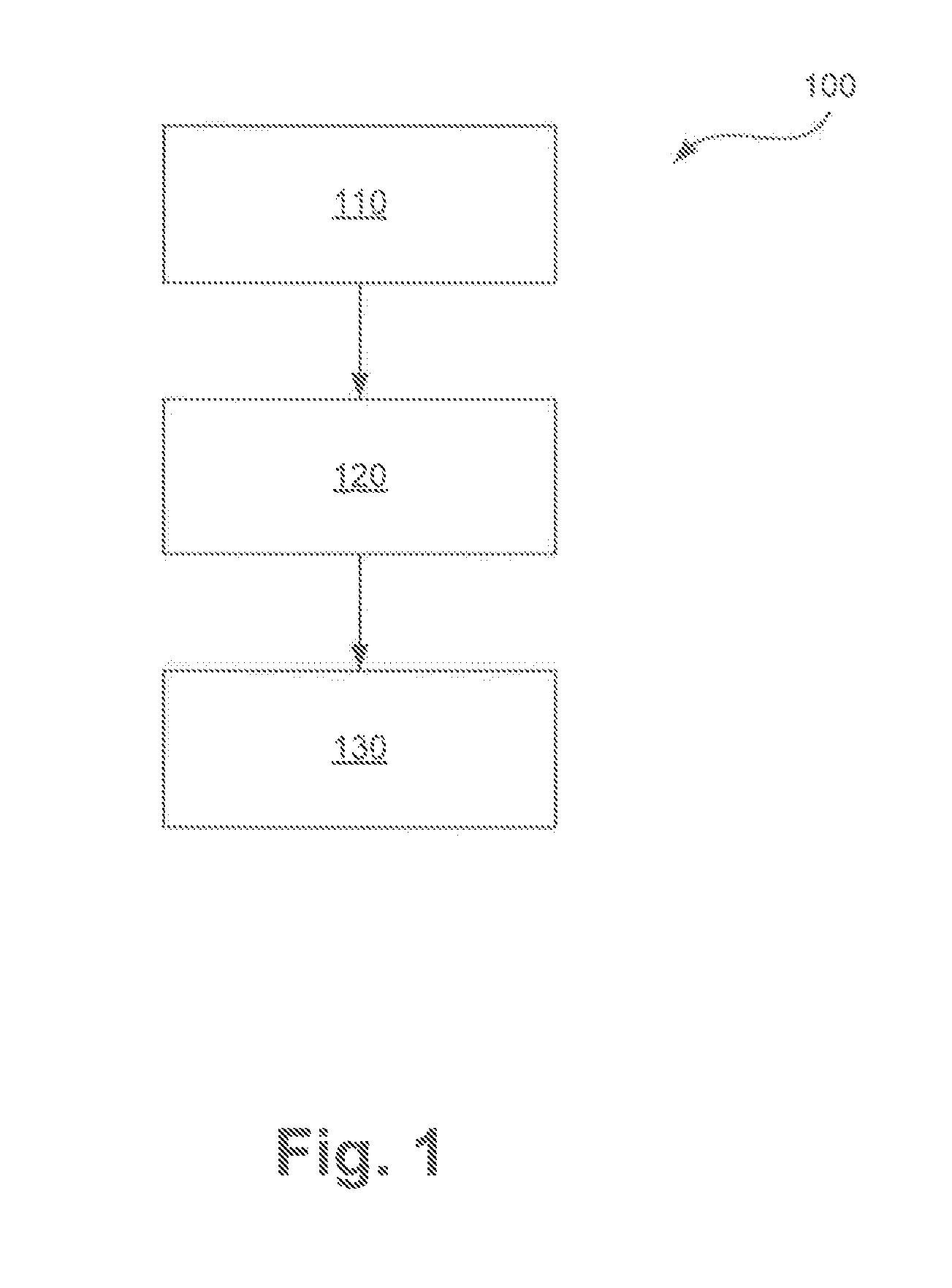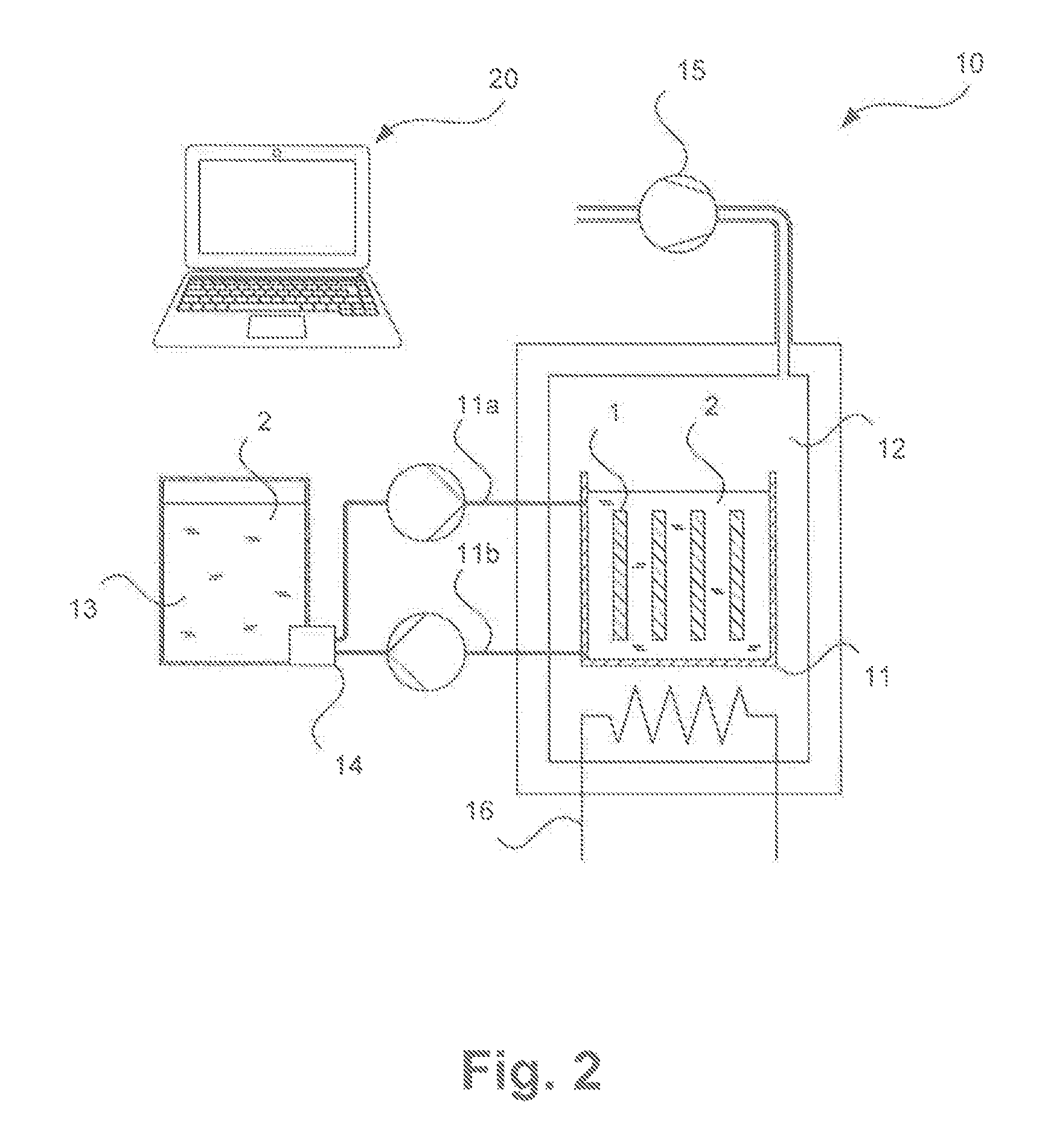Fixing tissue samples using nitrogen-containing compounds that release aldehydes
a technology of nitrogen-containing compounds and tissue samples, applied in the field of tissue processing, can solve the problems of unavoidable or expected pressure loss, particularly pressure level, etc., and achieve the effect of reducing the health risk, reducing the aforementioned health risk, and reducing the risk of operator health
- Summary
- Abstract
- Description
- Claims
- Application Information
AI Technical Summary
Benefits of technology
Problems solved by technology
Method used
Image
Examples
Embodiment Construction
[0049]In FIG. 1 a method in accordance with an embodiment of the invention is depicted in the form of a schematic flow chart and labeled 100 in its entirety. As explained before, the method is carried out in the form of a three-step fixing operation and encompasses steps 110, 120, and 130.
[0050]In step 110 at least one tissue sample is introduced into a fixing reagent, as repeatedly explained previously. In step 110, advantageously an infiltration of the at least one tissue sample with the fixing reagent may be carried out, for example by vacuum infiltration. Already in step 110, the tissue sample in the fixing reagent in a suitable container can be introduced into a tissue processor. In step 110 the at least one tissue sample is at a first temperature level and a first pressure level in the fixing reagent.
[0051]In a step 120 that follows step 110, the at least one tissue sample is left in the fixing reagent at least for a fixing time period. In step 120 the fixing reagent having th...
PUM
| Property | Measurement | Unit |
|---|---|---|
| temperature | aaaaa | aaaaa |
| temperature | aaaaa | aaaaa |
| pressure | aaaaa | aaaaa |
Abstract
Description
Claims
Application Information
 Login to View More
Login to View More - R&D
- Intellectual Property
- Life Sciences
- Materials
- Tech Scout
- Unparalleled Data Quality
- Higher Quality Content
- 60% Fewer Hallucinations
Browse by: Latest US Patents, China's latest patents, Technical Efficacy Thesaurus, Application Domain, Technology Topic, Popular Technical Reports.
© 2025 PatSnap. All rights reserved.Legal|Privacy policy|Modern Slavery Act Transparency Statement|Sitemap|About US| Contact US: help@patsnap.com



